I wake up early, before 6, to catch the train at 7. There is no sky, only an atmosphere of mist that seems to thicken the farther up you look, and the occasional sprinkle of rain. In the first class car I find an open seat with a table, ignore the paperback novel I’m carrying, and close my eyes just as the train eases away from the station.
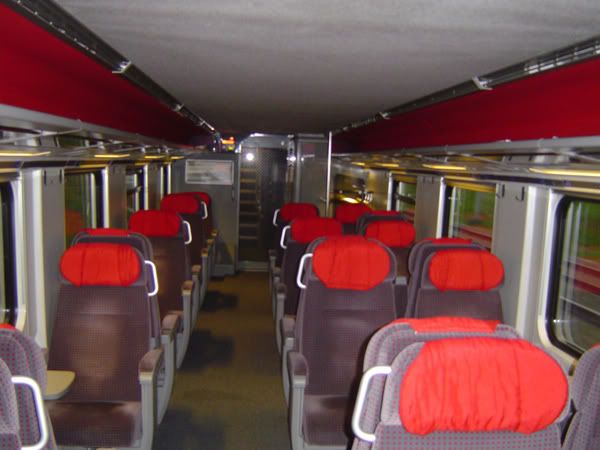
Zurich is a study in contrast. Its rolling hills feel suburban at the edges, almost remote, but civilization condenses like gravity the closer you move to the center. Buildings crowd together, the streets narrow, and the traffic of cars and trains and bodies becomes dense and busy. The Bahnhofstrasse might as well be Manhattan’s Fifth Avenue, bordered on both sides by upscale shops of clothing and jewelry and whatever you like. The people who patronize these shops are almost uniformly beautiful. Downtown is also where, if you look, you’ll find discreet banks that store enormous amounts of money for customers who value their privacy.
But this morning I’m leaving the familiarity of Zurich behind. As the train winds through the city, over bridges and through tunnels, I think about my destination, this place I’ve never been and yet know well. I should be excited, and I am, but after a late night in the Old Town, also known as the Niederdorf, I’m sleep deprived and my head feels thick.
Soon I’m in the countryside, looking across the Zurichsee, a long, narrow lake whose eastern shore is called the Gold Coast, so named for the mansions that are said to reflect afternoon sunshine glinting off the water. But today there is no sunshine. Just waves of that infernal mist. I head south and then west, sometimes sleeping and sometimes not. The train ride will be almost three hours through the heart of Switzerland.
Today I’m going to visit the largest science experiment in the world, the Large Hadron Collider at CERN, which is located near Geneva at the border of Switzerland and France. You might have heard a little about the LHC in the news lately. In the next few months scientists there will be gradually turning on the machine, which is a giant particle accelerator designed to smash bits of matter together. These impacts create even smaller bits that help us figure out what the universe is made of, how the whole thing works.
I’ve been interested in particle physics for several years, ever since I began doing research for my second novel, The God Particle. In my story, a particle accelerator is built under the mesquite thicket in northwest Texas, larger and somewhat more powerful than the LHC. To me there is hardly a more interesting question than how the universe works, how everything around us works, even though in my story I threw in a whole metaphysical subplot to make things more interesting. But during my research, what I never got to do was actually visit one of these facilities, since there are only a few in the entire world, and really only one–the LHC–that can do the most advanced work.
In Geneva, the Swiss speak primarily French, and the cab driver and I talk sparingly as we head for CERN. The first thing you notice upon arrival is the Globe of Innovation, a wooden structure 157 feet wide and 106 feet tall. It looks cool but it doesn’t have anything to do with the operation of the LHC.
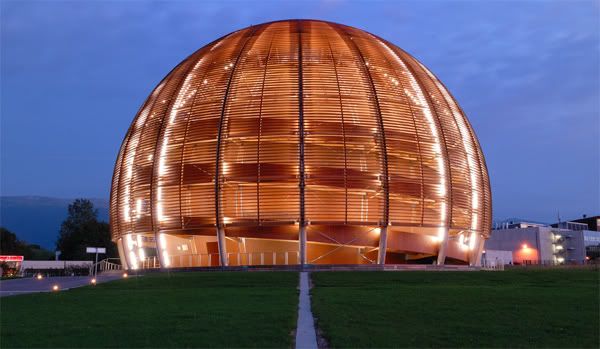
You also notice there is virtually nothing to see, because most of the action happens underground…and deep, too. The machine is a tube 17 miles around that is underground at a depth ranging from 200 to almost 700 feet. At several locations along the accelerator there are giant detectors where the particles will collide. The detectors “feel” the shrapnel of these collisions and are as much as seven stories high…again, underground. It’s no wonder the price tag for this project is somewhere in the neighborhood of 10 billion dollars.
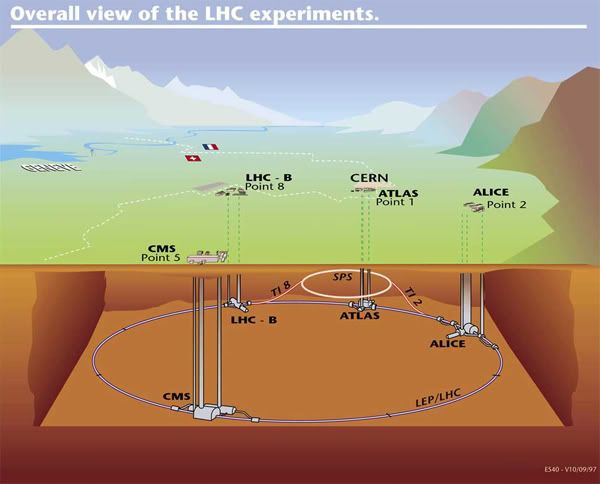
It may not seem like money well spent, but without an understanding of particle physics we wouldn’t have a lot of neat things like computers, iPods, the Internet. But I’m more interested in the big questions, the stuff that makes my brain sizzle when I think about it too much. This machine is designed to recreate conditions on Earth that haven’t existed naturally since the beginning of the universe, just after the Big Bang, an event that occurred 13.7 billion years ago.
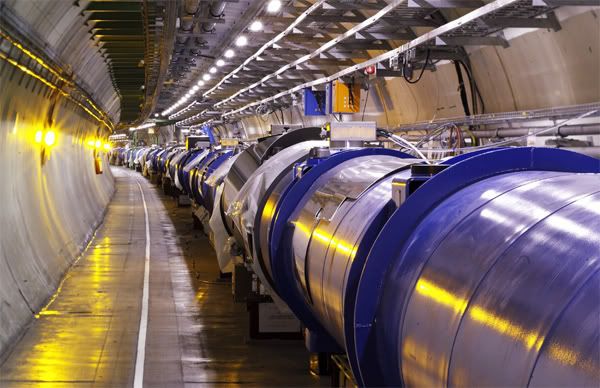
Cool, right?
And yet, when I arrive, it becomes obvious my tour is not going to be as impressive as I might have hoped. For instance, we won’t be venturing down to the tunnel, or to any of the detectors. We’ll see a few computer control rooms, and an antimatter factory, but that turns out to be nothing more to see than a rectangular, metal box.
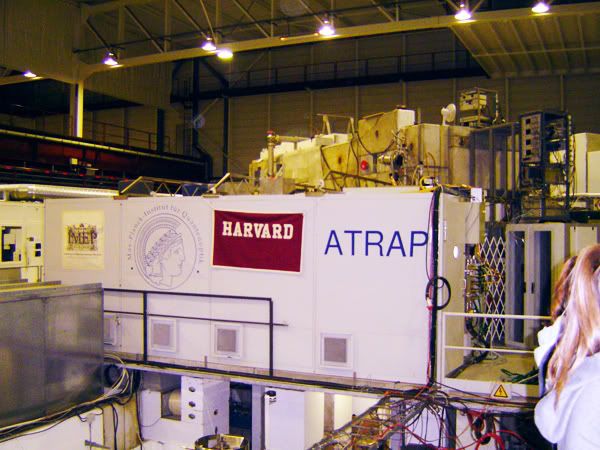
It turns out the highlight of the tour is not the collider itself but the people I meet while walking around the facility.
Before the tour begins, we are herded into a classroom to learn about the fundamental work of the LHC and particle physics in general. I feel pretty smart because I know everything they’re talking about. The rest of the tour class is a group of British high school seniors and an Australian guy in his 20s who is backpacking across Europe.
Even though the tour itself is not that interesting, the very fact that I am at CERN has me awestruck. For the first half hour or so I look around, wide-eyed, and keep to myself. But we stop every now and then as the physicist tour guide explains something to us, or asks questions. And to my surprise, the high school students have answers. Good answers. Did I tell you these students attend an all-girls school in a wealthy area of London?

And here they are, asking questions, they seem genuinely interested, and there is no adult chaperone here. They are touring on their own.
After a while I get to talking to the Australian, and he regales me with stories of his travels. But it’s obvious he also wants to chat up the girls, so we start a conversation with them. When the question comes up about why I’m there from so far away, I tell them my story. They are all impressed that I’m an author who wrote about a place like this, and this makes me happy. They ask me a lot of questions, and I ask them a lot of questions.
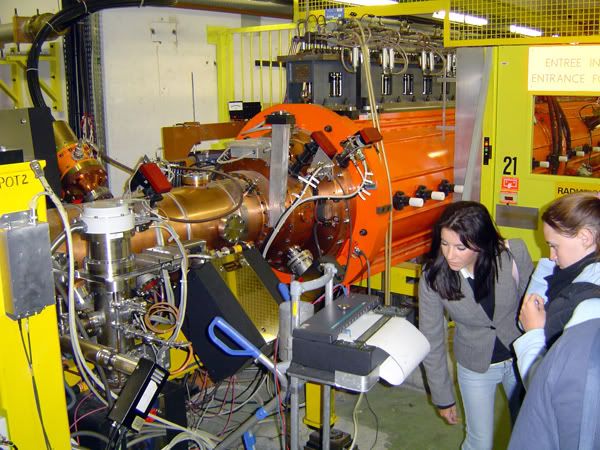
They are well-spoken and intelligent. Several of the girls are attractive–one could be a model if she wanted, but they all have a solid understanding of not only particle physics, but a range of subjects. I guess this shouldn’t surprise me, but it does. Where I live, girls who look like them do not often enroll in physics, or they personally believe that U.S. Americans have education like such as South Africa and the Iraq everywhere such as…
Just kidding.
I had been planning on taking a cab back to the train station, but when the tour is over we all herd into a bus, and of course the Australian and me end up toward the back, talking to the pretty girls. At one point he suggests we all get together for drinks and dinner, and the girls, unchaperoned, seem interested. But I have no business spending the evening with a bunch of 18 year-old girls. Besides, I have a train to catch, because I’m flying out of Zürich at 7 the next morning.
Once I’m back on the train, headed east toward the approaching darkness, I consider my visit. I traveled a long way to visit CERN. It was something I’d wanted to do for more than a year. For a few hours I was fortunate enough to step into the exotic setting from one of my high-concept novels.
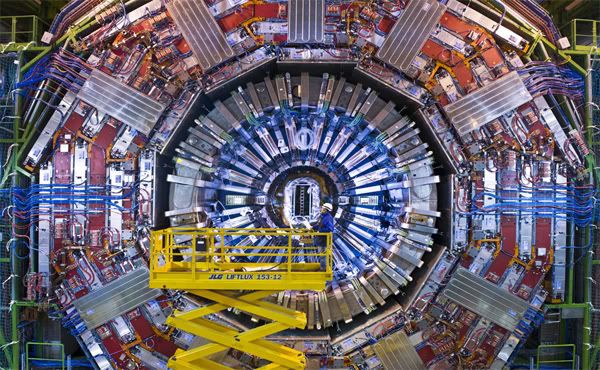
And yet, what will I remember from the visit? The people.
Just like when you look back on your vacation photos, you don’t care as much for that wide-angle shot of the Grand Canyon as the close-up where your friend is dangling his legs over the ledge.
For someone like me, so fascinated by the physical world, obsessed with knowing the answers to deep questions, it’s easy to forget none of it would matter if we didn’t have friends and family and loved ones to share in our fascination.
Because while people are particles, particles are not people, and that distinction is as important as the universe is vast.
Note: The pictures of the Globe, the tunnel, and the CMS detector are not mine. You can find them and more awesome LHC pictures here.

Recent Comments